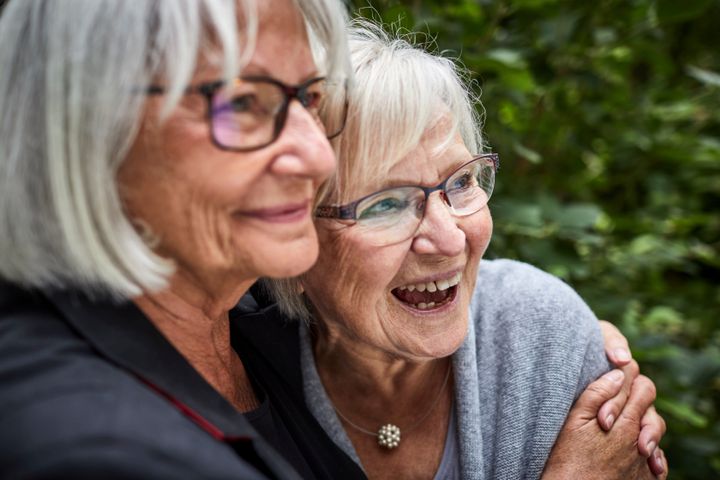On Aug. 30, Netflix premiered a four-episode docuseries about the secrets of living a longer, healthier life. Specifically, the docuseries details five regions where people have the longest lifespans and healthspans (the period of time in your life that you are healthy).
These areas are known as the “Blue Zones,” a term coined by Dan Buettner, a journalist, explorer and National Geographic fellow. And they aren’t just in one part of the world: The five locales are Okinawa, Japan; Sardinia, Italy; Nicoya Peninsula, Costa Rica; Icaria, Greece and Loma Linda, California.
“The Blue Zones are certain parts of the world where people are known to have a longer and better lifespan than the average across the globe,” said Dr. Anant Vinjamoori, the chief medical officer at Modern Age, a health clinic that’s focused on healthier aging.
According to Buettner’s research, these regions have the most people living to 100.
“And the really interesting thing about the research that Dan Buettner has done is that there are certain themes that come out of observations of these different parts of the world, and we can then use these themes to inform strategies that we can take as people to help improve our own healthspans and lifespans,” Vinjamoori continued.
The good news is you’re probably already adhering to some of these rules and can fairly easily implement other aspects, too. Below, doctors share the lifestyle habits people in the Blue Zones follow and how they align with decades of medical research.
People in Blue Zones eat more plants.
When it comes to eating, people in the Blue Zones prioritize “diets that are very plant-forward with modest amounts of animal protein and animal-based products,” Vinjamoori said.
This means lots of fruits, veggies and protein from legumes — like lentils, peas, beans and peanuts, according to Dr. Nate Wood, an internal medicine doctor at Yale Medicine.
This adds to research that has long shown that a plant-based diet has health benefits. In fact, Dr. Sadeer Al-Kindi, a preventive cardiologist at Houston Methodist Hospital, said the more plant-based a diet is, the bigger the impact it has on lowering your cholesterol and blood pressure, which can reduce your risk of heart disease. It’s also important to lower your salt and processed meat intake, Al-Kindi added.
They’re in touch with their hunger and fullness cues.
According to Wood, in the Okinawan Blue Zone, they adhere to a form of mindful eating known as hara hachi bu. This is “basically where you stop eating when you’re 80% full,” Wood explained.
Becoming more in tune with your body’s food needs has become buzzy outside of Blue Zone culture, too — you’re probably familiar with newer terms like intuitive eating and mindful eating.
This type of eating can also help you determine when you’re hungry so you can ensure your body is getting the nutrients it needs.
They have long-lasting social connections.
“In all the Blue Zones, there’s a strong sense of community and social engagement,” according to Vinjamoori.
This could include being part of a faith-based community or having deep friendships or strong familial relationships.
“There’s often multigenerational homes that people live in, where grandparents are helping to raise grandchildren,” Vinjamoori said, which adds to that deep family connection.
“You’ll find that this is a theme in a lot of the studies that people have done as a field, that healthy agers tend to have more and better quality connection with people,” Al-Kindi added.
These social relationships have a positive influence on your health. “On the flip side, there’s emerging research we now have, especially the United States, about how loneliness and a lack of all of this can have a negative influence on the aging process,” Vinjamoori said.
Oliver Rossi via Getty Images
They prioritize movement.
“Another pillar is activity and movement, and so when we look at all these different parts of the world, we noticed that people there generally move a lot,” Vinjamoori said.
While intense CrossFit classes and sweat-drenching spin classes are great, this kind of movement isn’t the sole focus in the Blue Zones. Instead, it’s more of an overall prioritization of movement in our daily lives.
What does this mean? “In one of the Blue Zones off the coast of Italy, people are walking a lot, and they’re walking up hills because … they need to walk around their villages to get to the things that they need to get to as part of their daily errands,” Vinjamoori said.
“Physical activity is something we think of as a chore here in the United States, but … in these Blue Zones, it’s something they incorporate into their daily life,” Wood added.
For you, this could mean going for a walk instead of sitting in the car or taking the stairs instead of the elevator. The little things all add up to create a life that encompasses more movement.
“The idea is, just move around as much as you can, try to limit the amount of time that you’re sitting in one place,” Vinjamoori explained “This daily movement that people do can be really significant in terms of just generally promoting the right mechanisms of our bodies to help us age better.”
They know how to cope with stress.
Another important habit in the Blue Zones is stress mitigation.
“We’re not so good at that here in the United States,” Wood said, adding that when stress goes untreated, it can cause serious implications both mentally and physically.
Chronic stress “can drive changes in your hormones like cortisol, which can lead to inflammation, which can cause chronic diseases and cancers, which can lead to premature death,” Wood explained.
They seek out a life purpose.
Throughout the Blue Zones, having a life purpose — whether it’s a drive to help others, help animals or live an ethical life — is important.
“I think recently, post-pandemic, especially in young men under 30, we realized that a lot of people in our culture, at least the United States, feel kind of lost without a purpose,” Wood said.
Research suggests that people have a sense of purpose that they carry with them throughout their lives in the Blue Zones, according to Wood, and when they do, it helps benefit them emotionally and mentally. Additionally, having a life purpose can help tangentially reduce chronic stress, which, as mentioned above, can lead to detrimental health outcomes.

Tom Werner via Getty Images
These habits aren’t limited to Blue Zones. Here’s how to adopt them more into your life.
“We’ve known for a while what factors are really associated with prolonged life and healthy aging … when we talk about prolonged life, it is not only the length of life, but we want also to live a healthy life, right?” Al-Kindi said. “When you think about a healthy life … the first question that comes to mind is what are the causes of death that happen in the world? Because that’s how you start to think about how to live longer, by addressing these.”
The two major causes are heart disease and cancer, with heart disease being the leading cause of death in the world. By reducing heart disease deaths, you’re able to prolong people’s lifespans, Al-Kindi said.
So it’s not surprising that when people move more and eat more nutritiously, as they do in the Blue Zones, they have lower rates of heart disease, and, thus, lower rates of early death, Al-Kindi noted.
Additionally, Wood said the American College of Lifestyle Medicine has done research to determine the things that can help prevent and treat chronic illness, and those pillars align closely with the findings from the Blue Zones.
“I feel like over time, we’re like really coming to a consensus [on] evidence-based behavioral strategies that lead to long and healthy lives, and the Blue Zones are a really good example of that,” Wood said.
You don’t have to immediately add all of these habits to your life, either. Instead, you can start with what feels right.
“One of the things I love about the Blue Zones research is that it is so within reach of most people,” Vinjamoori said.
By joining groups to boost your social connections, visiting your family more often, moving around more than you sit and focusing on what you put into your body, you can achieve many of these things.
Wood said if you’re going to start somewhere, he recommends starting with changes to your diet. “I think the biggest thing I would recommend is to, as much as you can, increase your intake of fruits, vegetables, whole grains, nuts and seeds, try to incorporate beans into your diet for sources of protein, and then really try to limit processed foods and processed and red meats.”
If eating a more plant-based diet is an extreme change for you, it’s OK to start small. Try replacing one meal a week with non-meat proteins like a black bean burger instead of a turkey club, or cottage cheese with fruit instead of a bacon-based breakfast, and increase your non-meat-meal intake from there.
Lastly, don’t lose hope if you don’t live in one of these Blue Zones ― good lifestyle habits aren’t exclusive to these areas.
“There’s a lot of other areas that people live longer and happier, and just because [in] these Blue Zones, on average, people live longer, it doesn’t mean that every single person in that Blue Zone is living to that age,” Al-Kindi said. “We advocate that everybody can have the opportunity to live long and happy and healthy by following the … evidence-based public health recommendations.”
And when it comes to those recommendations, they aren’t too dissimilar to what’s seen in the Blue Zones.
“It’s aligning with these other types of research for a reason, which is [that] it’s common sense. It’s simple, but it’s not easy — implementing all those things that we talked about is obviously not easy, but it doesn’t cost a lot of money a lot of times, and it can be simple,” Wood said.


